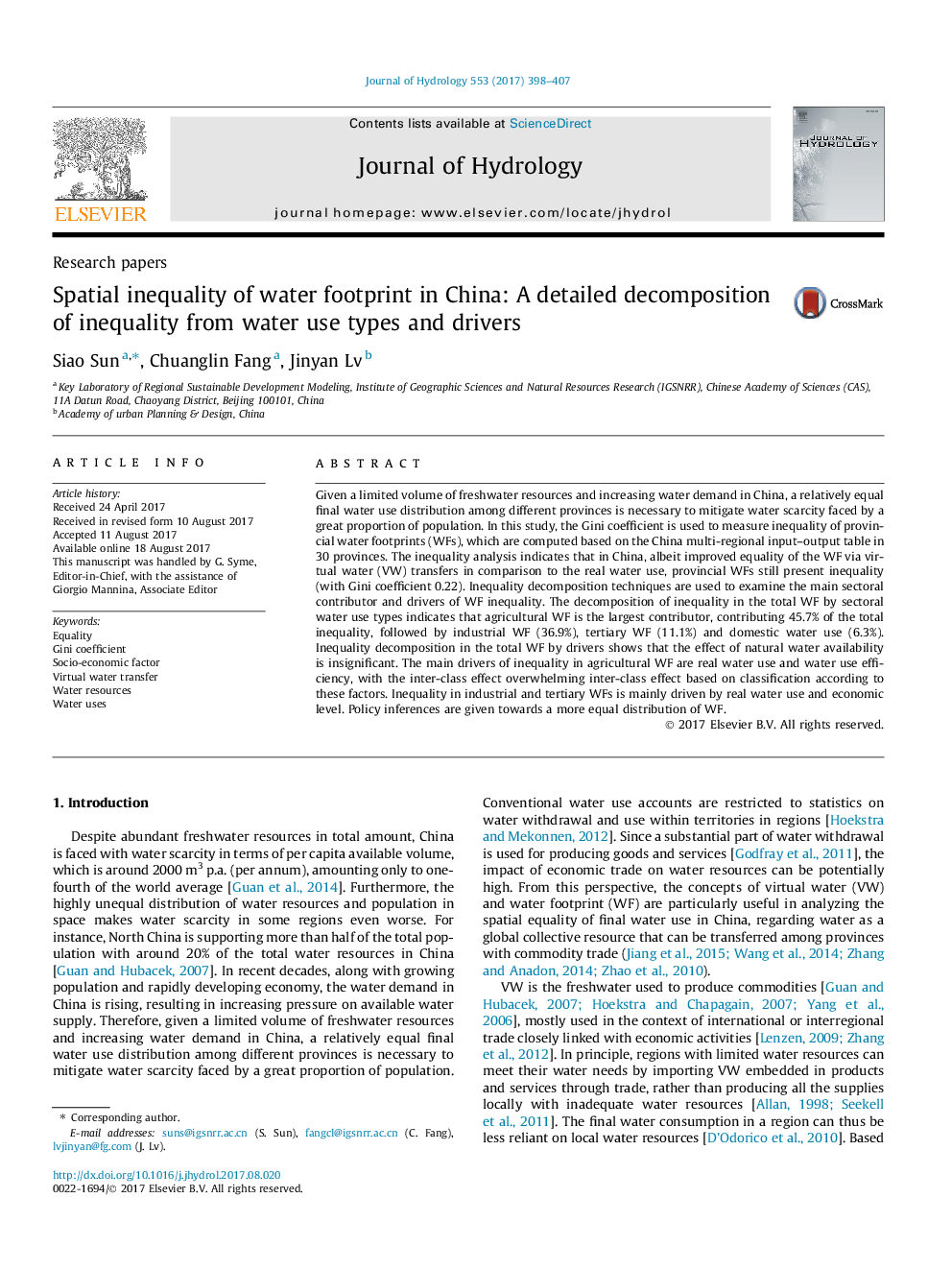| کد مقاله | کد نشریه | سال انتشار | مقاله انگلیسی | نسخه تمام متن |
|---|---|---|---|---|
| 5770826 | 1629901 | 2017 | 10 صفحه PDF | دانلود رایگان |

- Overall, virtual water transfer reduces inequality in water footprint in China.
- The largest contributor to water footprint inequality is the agricultural WF.
- The water footprint is independent of local natural water availability.
- Inequality in sectoral water footprints is driven by different socio-economic factors.
Given a limited volume of freshwater resources and increasing water demand in China, a relatively equal final water use distribution among different provinces is necessary to mitigate water scarcity faced by a great proportion of population. In this study, the Gini coefficient is used to measure inequality of provincial water footprints (WFs), which are computed based on the China multi-regional input-output table in 30 provinces. The inequality analysis indicates that in China, albeit improved equality of the WF via virtual water (VW) transfers in comparison to the real water use, provincial WFs still present inequality (with Gini coefficient 0.22). Inequality decomposition techniques are used to examine the main sectoral contributor and drivers of WF inequality. The decomposition of inequality in the total WF by sectoral water use types indicates that agricultural WF is the largest contributor, contributing 45.7% of the total inequality, followed by industrial WF (36.9%), tertiary WF (11.1%) and domestic water use (6.3%). Inequality decomposition in the total WF by drivers shows that the effect of natural water availability is insignificant. The main drivers of inequality in agricultural WF are real water use and water use efficiency, with the inter-class effect overwhelming inter-class effect based on classification according to these factors. Inequality in industrial and tertiary WFs is mainly driven by real water use and economic level. Policy inferences are given towards a more equal distribution of WF.
Journal: Journal of Hydrology - Volume 553, October 2017, Pages 398-407